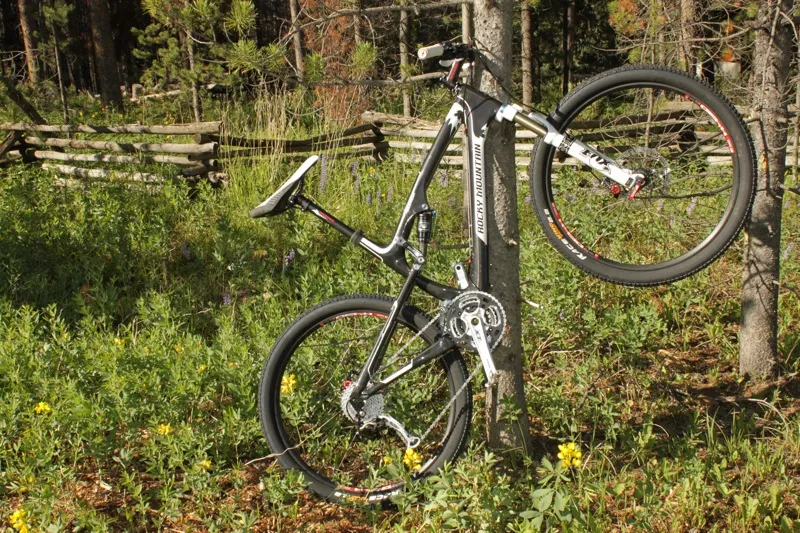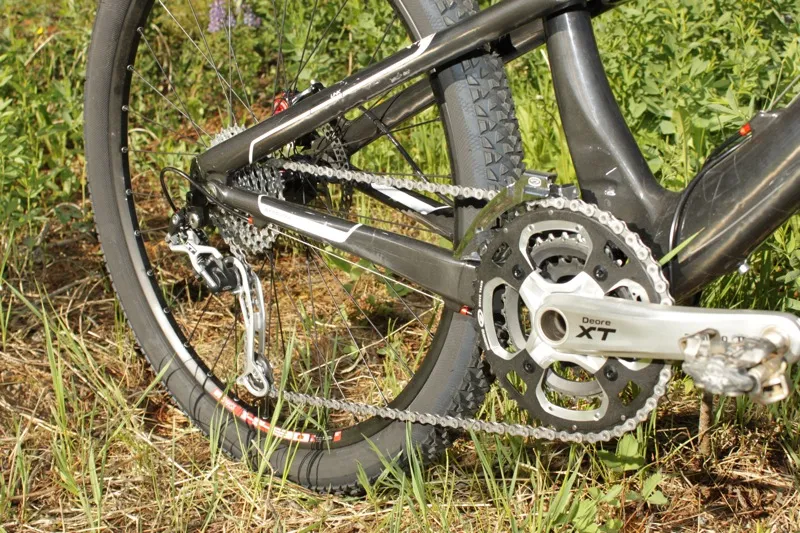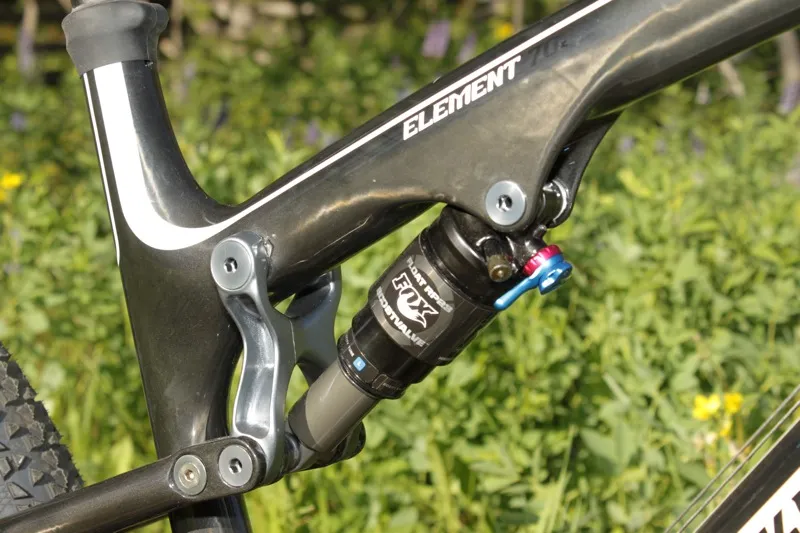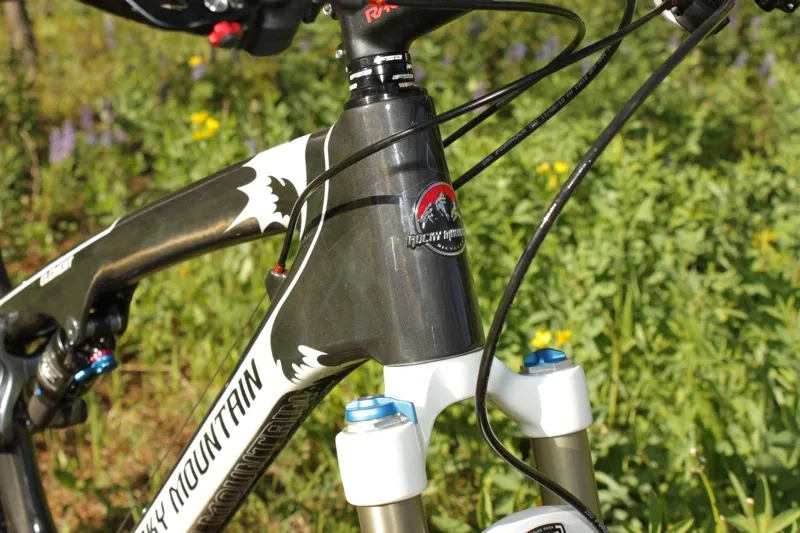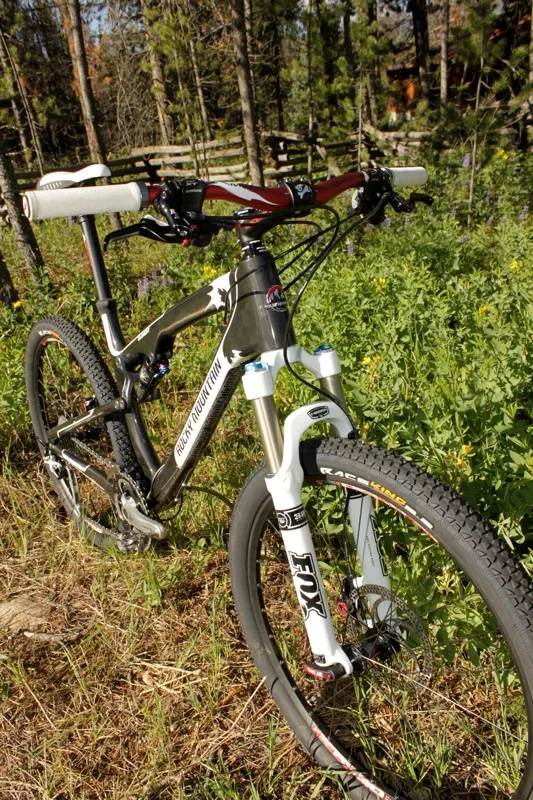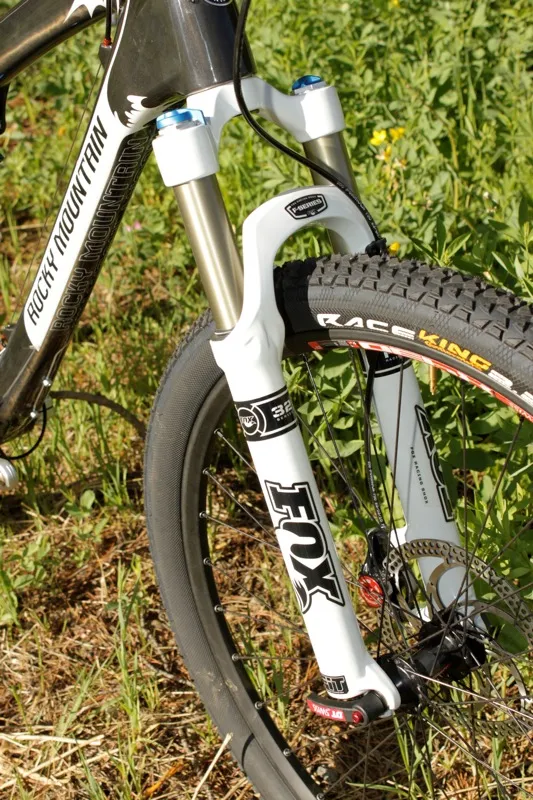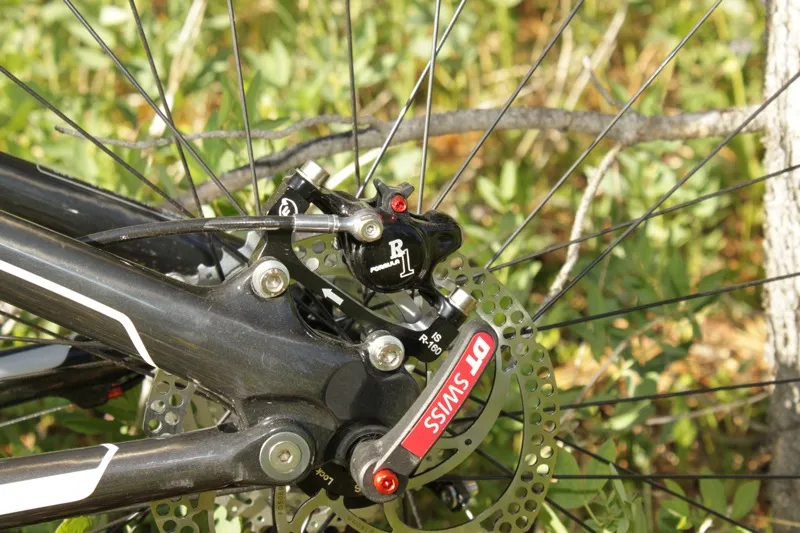Last year Geoff Kabush rode a Rocky Mountain Vertex Team RSL hardtail to his first World Cup cross-country win. It was ironic, as the Canadian is a long-time proponent of full-suspension race bikes, but at that time Rocky Mountain didn’t have a machine deemed worthy of the task.
That’s something that has now been remedied with the new Element RSL, and since it was unveiled at April's Sea Otter Classic Kabush has rarely been seen riding anything else. That suggests Rocky Mountain have built a winner; now he just needs to make it official and win another World Cup or maybe even the World Championships on it.
BikeRadar were among the first to receive a production 2011 Element RSL for testing, and we've now put in over a month of trail riding and race miles on the bike. We can report that it's light and laterally stiff, and will certainly make you happy if you have World Cup aspirations.
However, if your ambitions stretch beyond the racetrack, its performance is stymied by poor shifting performance, a low bottom bracket that could catch you off guard, and suspension bob when standing or sprinting.
If you predominantly pedal from your saddle and can mind your cranks through technical terrain and rock gardens, this may not be an issue. Personally, we'd opt for the longer-travel (120mm) MSL version instead.

The Element 70 RSL's low bottom bracket led to regular pedal strikes
Ride & handling: All-out race machine that feels out of its depth on more technical/fun trails
Even with its workhorse Shimano XT group, DT Swiss X1600 wheels with 340 hubs, and Race Face alloy cockpit, our Element 70 RSL weighed in at a very impressive 24.3lb. This underlines the fact that it is truly a World Cup racer.
Its 95mm of rear travel feels like less because it's so orientated toward efficiency, with the shock ramping up pretty hard at the end of the stroke. This is detrimental to the amount of fun you can have on the bike when just out trail riding, and confirms the impression that the RSL is a single-purpose speed machine for racing.
The MSL model uses the exact same carbon fibre frame but adds 20mm of travel through the use of a different swing link and rear shock. The MSL also has a longer-travel fork that slackens the head tube and pairs with the rear shock at virtually no cost to the bike's weight or other attributes. In fact, it should make it both more fun and better for the average (non-World Cup) racer.
The MSL also addresses another of our issues with the RSL – bottom bracket (BB) height. The RSL has a 20mm drop, which turned out to be an absolute pain in the foot (also hip and shoulder, literally) because we hit so much stuff with our pedals, going both up and down. It even caused crashes in a few instances. The MSL has a much more manageable drop of 13.5mm, which we think will produce a much happier test rider.
It’s an issue that we brought up with Rocky Mountain’s product and sports marketing manager, Peter Vallance, who had this to say: “We run our bottom bracket approximately 10mm lower than some of our competition and we feel the gains in cornering and handling are worth what we give up in clearance.
"The RSL features the same BB height as the Element Team bike that we've had in our lineup for the past 14 years and has been one of the most successful full-suspension platforms in mountain bike history. We've found that new riders notice the low BB but adapt very quickly, and the low BB becomes a handling asset. As I’m sure you know, the trails around our office are as gnarly as they get, and those are the trails Element was born on.”
The low bottom bracket height wasn't our only issue with the Element. We also noted a major drop in pedalling efficiency when standing or sprinting. Even with the ProPedal platform damping on the Fox RP23 shock set to the heaviest setting, the bike broke from its efficient seated performance and bobbed under effort, every time, no matter how smoothly we tried to pedal.
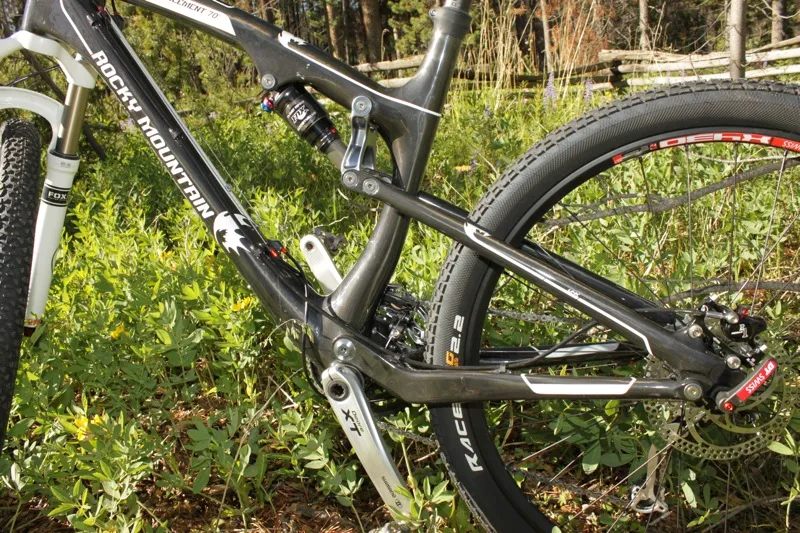
The Smooth Link suspension design puts the rear linkage pivot forward and above the rear axle, which should isolate it from the effects of chain tension
When we raised this with Vallance, he told us: "We worked very closely with Fox to determine the best possible shock tune for the bike, including a multi-day test camp in Tucson where we experimented with several different fork and shock configurations. Normally, Fox don’t do camps like that for cross-country riders, but they did so with us because Kabush is an anomaly, as he prefers suspension that is quite active and uses its full travel.
"Many cross-country racers want their suspension super-firm so as to lose nothing to suspension movement, but that’s not taking advantage of all the bike has to offer. After several iterations with testing by both Andreas [Hestler] and Geoff, we concluded that the current spec is the best for the bike."
Despite this, the shock tune seemed off to us. We're sure the factory set rebound tune is too heavy, despite being labelled as medium – we only ran one to two clicks from fully open – and the light velocity (compression) tune was likely the issue that caused the platform ‘break’ when we stood up.
If it was up to us, we'd also give the Fox F100RL fork much more low-speed compression damping for its open position and mellow out the FIT RL damper lockout. The Element RSL may be a cross-country racer, but it’s also a full-sus; we feel it’s a little bit too plush when open and far too firm when locked. Fox don’t generally offer tuning to manufacturers for forks. The only solution for the front we’ve come up with is to lose the fancy Formula brakes in favour of an RLC damped fork.
We would also describe the Element’s shifting performance as decidedly sub-par. The shifting even went goofy on us in short track races, which generally last less than half an hour, to the point that we were messing with the barrel adjusters on the straights.
We attribute this to two things: the shift cable routing with big loops below the bottom bracket and the use of Jagwire’s cables. While the cable set is equipped with cool red anodised alloy ferrules, we'd have given anything for some good old Shimano SP-41 housing on this bike. The first upgrade we’d make is to a Gore cable kit. Since this review published, Rocky Mountain informed us that the 2011 Element RSL and MSL bikes will be equipped with Shimano's SP-41 housing.
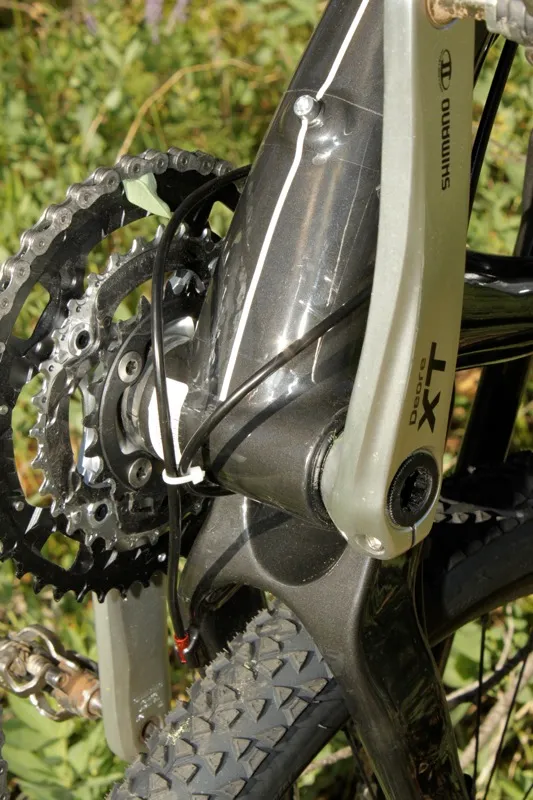
We're not stoked on the long loops of cable below the bottom bracket
Frame: Light, stiff and nearly all carbon, with excellent attention to detail
The Element's frame may be light (4.51lb with all its hardware) but it's still one of the stiffest full-suspension bikes (laterally) we’ve ever ridden. This gives it excellent tracking ability and a general solid feel; it truly inspired confidence in our riding, save for the bottom bracket height.
The Element’s stiffness comes from several areas, including the 1-1/8 to 1-1/2in tapered head and steerer tube, which allows it to track superbly. Rocky Mountain's Smooth Wall carbon manufacturing process insures there are no voids within the frame and that the resin is distributed evenly, and it's made from three different types of Toray carbon (M30G, tensile strength of 5,100MPa; M40J, 4,413MPa; and T700s, 4,900MPa).
The key to this chassis, however, may be the Angular Bushing Concept (ABC) pivots, which are said to be 105 percent stiffer and save 120g compared to sealed cartridge bearings.
As stated previously, the Element’s seated pedalling efficiency seems second to none. It can easily compete with any other non-inertia damped rear suspension systems on the market, including ABP, dw-link, Maestro and VPP. Rocky Mountain call their system Smooth Link and it places the main pivot and rear linkage pivot in front of and above the rear axle.
This orientation is said to keep the lower linkage virtually parallel with the bike’s average chain torque line at all points of travel and isolates the system from chain tension. The linkage has a linear rising rate. Pedal it as hard as you want from the saddle and you’ll be impressed; we did and were.
Rocky Mountain have nailed all of the little details that make a truly refined chassis. The RSL is almost entirely carbon, save for its hardware, which is exquisitely manufactured anodised alloy and titanium. A built-in sag indicator on the upper link (and a super-easy reach to the rear shock’s ProPedal lever) makes for easy suspension setup.
Down below, a press-fit BB92 bottom bracket is used for the lightest possible weight, along with a swingarm mounted E-Type front derailleur with two chain suck prevention plates and an ‘anti-drop’ plate. Finally, there's a very cool rubber gasket on the seat collar.
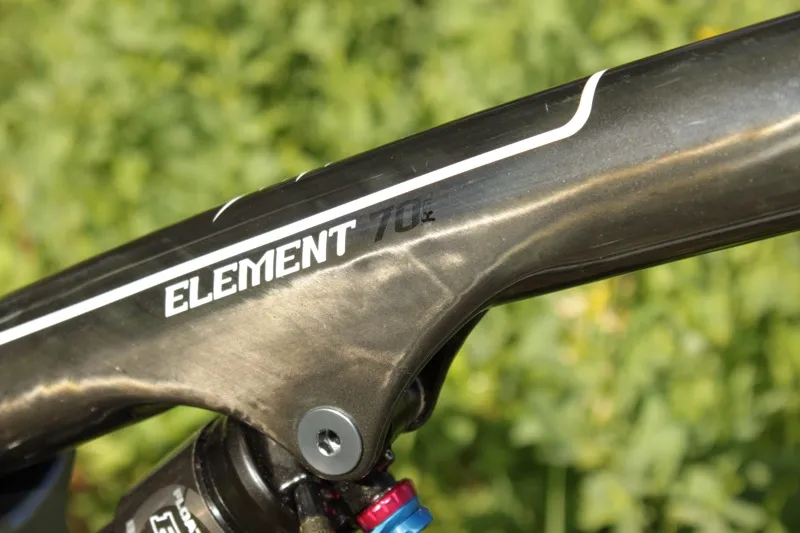
The Element frame, which is shared by the RSL, MSL Team and 70 models, features a clear coat over raw carbon
Equipment: Quality kit that'll go the distance, including 10-speed XT and Formula R1 brakes
When it comes to the parts spec, Rocky Mountain have done a great job creating a true workhorse with the Element RSL 70. There are really no bones to pick. It’s not a light spec but it’s sure to last for a long time, as all of the components are well proven.
While our test bike was equipped with nine-speed Shimano XT, the production 2011 Element 70 RSL will use the new XT Dyna-Sys 10-speed group instead. No issues here, except the fact that Rocky Mountain have decided to spec the 11-34-tooth cassette instead of the 11-36T version; a head slapper in our opinion.
The Race Face Deus 110mm stem and 680mm bar put us in an aggressive cross-country position over the front end and the seatpost isolates fore-aft and tilt adjustments, making position changes to the Fizik Gobi XM saddle super-easy. Rocky Mountain use their own Lock On XC grips, which sport an ODI Ruffian style grip and are excellent in terms of shape and feel, though slippery without gloves.
The X 1600 wheelset comes with tubes and you'll need to tape-seal it for racing, but it’s a solid choice that's easily repairable and sure to provide good service. The Continental Race King 2.2s tyres are round, tall, narrow and kind of vague, especially in loose terrain, but they roll super-fast and are reasonably predictable, which makes them a decent pick overall, especially for racing.
Finally, the Formula R1 brakes are phenomenal in terms of power, modulation and feel. In fact, we could happily do without the 180mm rotor on this cross-country race bike.
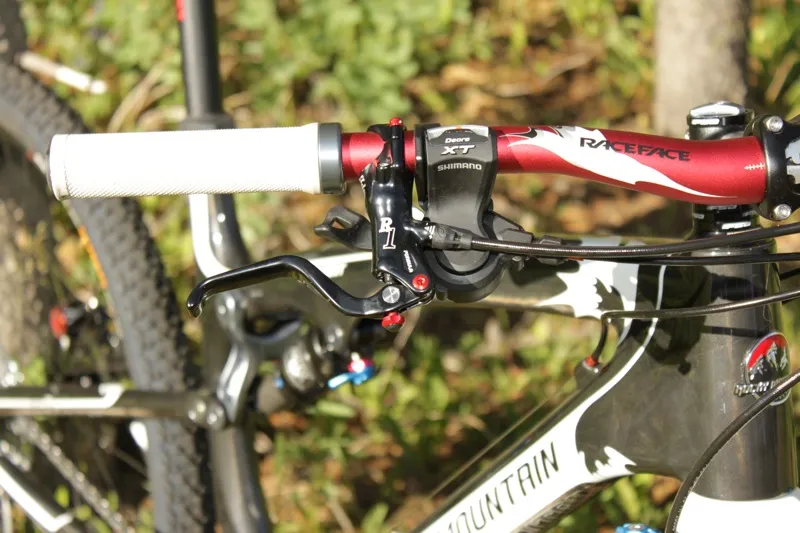
Formula's R1 brakes performed flawlessly and we loved the Rocky Mountain grips

